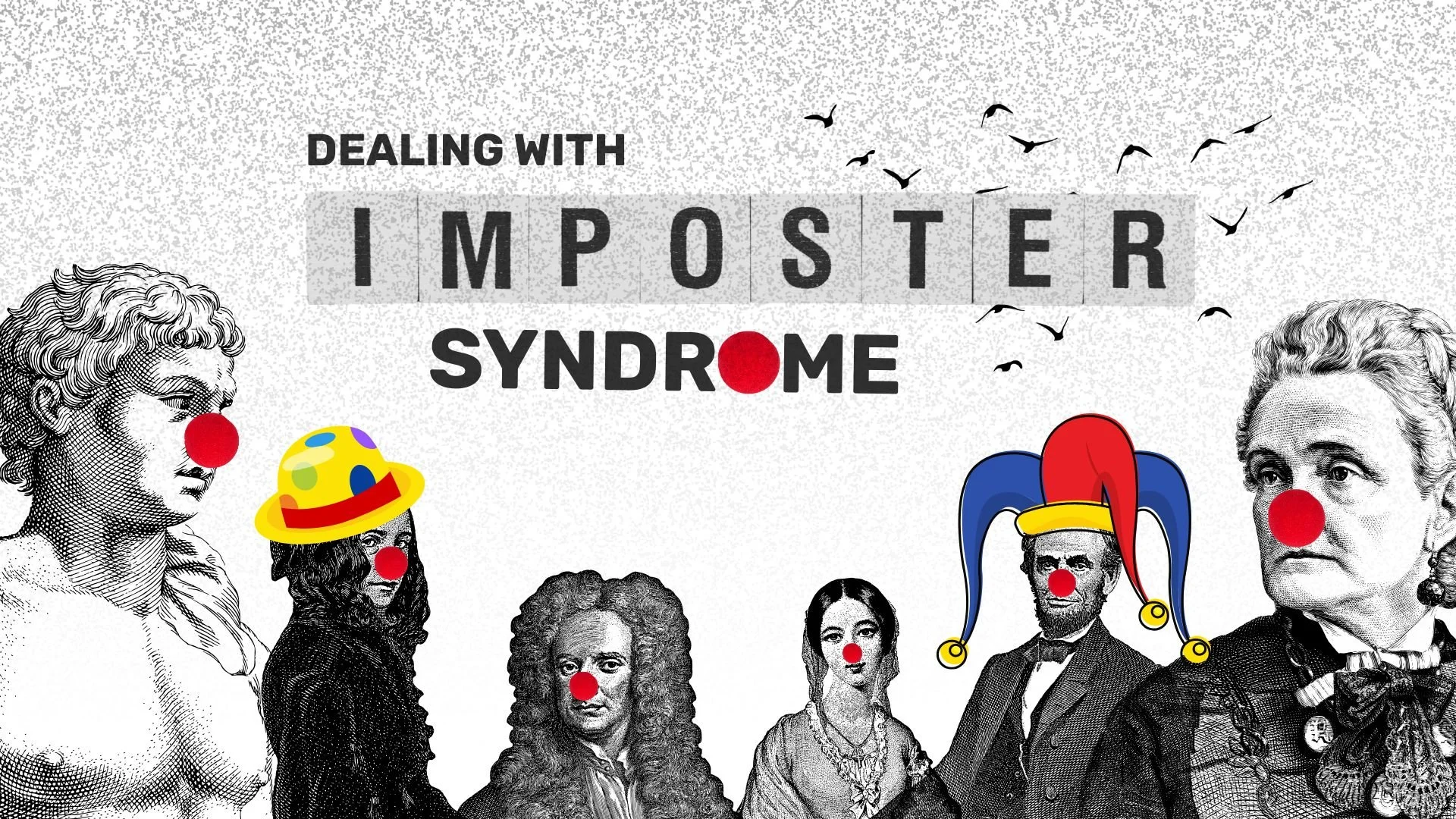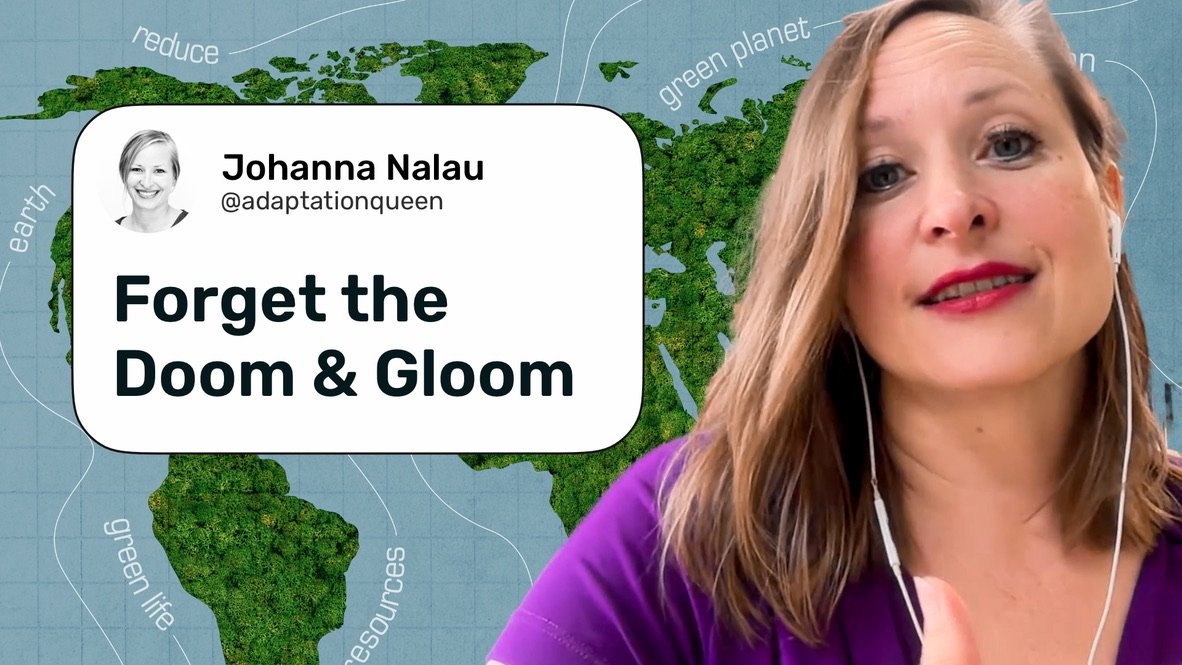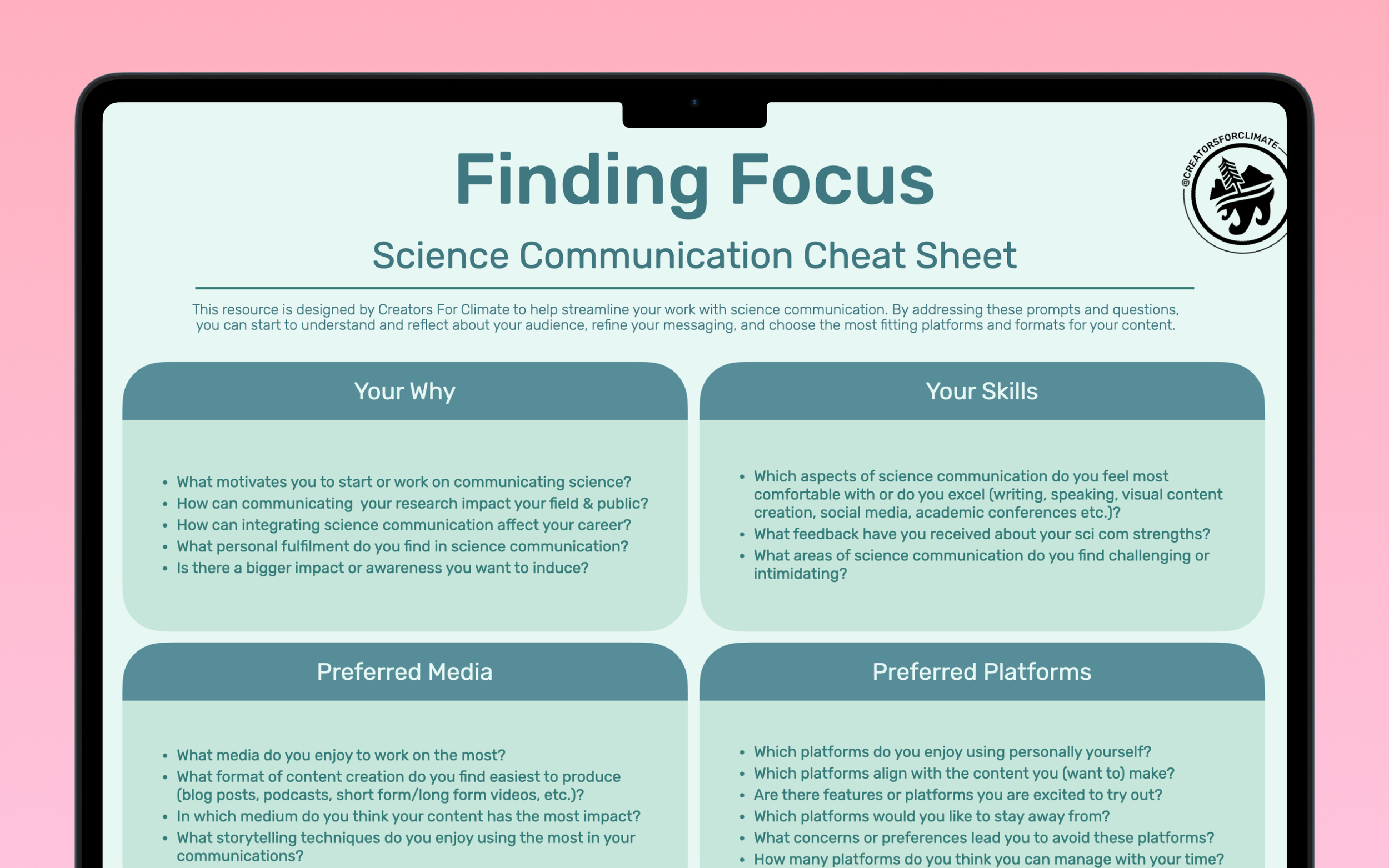Take a minute to read the blog
About creating climate content and science communication.
Why your audience doesn’t seem to care about you.
We just finished a month of intensive coaching across a handful of projects. All solo creators or science communicators working on climate and science content. People with different goals, different platforms, but all kind of dealing with the same pain point: a mismatch in content fit. That’s what I want to get into with this article. Over a sprint of 4 sessions we saw how those puzzle pieces clicked into place. And as a result, every step got easier. This is the distilled playbook of all those sessions.
For anyone with Imposter Syndrome, read this.
There’s a quiet, persistent voice that follows many people who care deeply about their work. It doesn’t yell. It whispers: “You don’t really belong here, do you?” This is the voice of imposter syndrome. This entry is a reflection on what it means to carry this voice. What it takes to shift our relationship with it. To understand the (often invisible) mechanics of feeling like a fraud, even when there’s proof you’re not.
A Science Communication Framework to get you Started
If you’re just starting out with science communication, this entry is for you. I'll be sharing the path that led me from marine biology to creative storytelling, and the core framework I now teach to scientists to start their own communication journey. That framework is divided into two parts: 1. starting from your strengths and 2. connecting with the people who matter.
Ocean with David Attenborough, a Masterclass in Storytelling
Here’s what you can learn from watching Ocean with David Attenborough: it was a masterclass in storytelling. I found myself caught in a loop of emotions: wonder at the beauty of marine life, despair for its destruction and hope for what’s still possible. But it was the way the film used narrative structures that kept me on the edge of my seat. Instead of a review, I prepped this “creator breakdown”, to show how we can adapt these narrative structures and storytelling tools into our own climate or science messages.
We need more Generalists in Science Communication
Many of us are told to niche down, become specialists…. but in climate and science communication, having a broad knowledge base can actually be a strength. This entry is to make a case for the generalists among us. The translators and bridge builders, as I like to call them. People who dare to think beyond current systems and expertise. If you’ve ever felt “not specialized enough,” you might be exactly what this field needs.
Our Role as Climate Creators (and yours too?)
Every year around this time, inboxes fill with the same messages: a veggie challenge, swap your coffee cups for reusables, buy local produce, eat locally. And while these things matter (a lot), they tend to frame climate action as an annual checklist. Well, Earth Day is here again pretty soon, and this time we’re collaborating with EARTHDAY.ORG to shift that conversation.
Let’s talk worldviews, fear and the courage to speak up.
Some of you might recognize this sentiment: "I'm not sure if I can continue. I worked so hard for the cause, but it all seems to be for nothing nowadays". It's a vibe our field has been hit with... hard. Let's dissect that through these 4 different lenses below.
5 Psychological barriers to connecting with your audience
What if we stopped trying to convince and instead started connecting? In this entry we'll look at creating campaigns with impact. How changing behavior starts with the way you talk to your target audience.
What do you call creators who talk about climate?
Seriously, what do you call a creator who integrates climate and environmental themes into their storytelling? No, this is not the start of a joke, but a niche with an identity crisis.
How Neil deGrasse Tyson thinks about climate change
If you’re a climate communicator, an activist or just a human trying to make sense of it all, it’s easy to feel consumed by the chaos. We'll take a look at how we can find back our peace and calm. Anxiety can be overwhelming, but that doesn't mean there is no light at the end of the tunnel.
5 Rules of Sanity in a world on fire
If you’re a climate communicator, an activist or just a human trying to make sense of it all, it’s easy to feel consumed by the chaos. We'll take a look at how we can find back our peace and calm. Anxiety can be overwhelming, but that doesn't mean there is no light at the end of the tunnel.
Case Study: Cleaning up the Dirtiest River in Europe
This blog serves as a case study to learn more about our Creators For Climate Missions, focusing on what worked well and the lessons we learned along the way. We’ll cover insights from both an environmental perspective and the content strategy side. See it as a blueprint for upcoming environmental campaigns.
What happens when we fix climate change? With Johanna Nalau
Let's explore climate adaptation with A/Prof. Johanna Nalau: Where does climate mitigation end and adaptation start, how can we implement these strategies today, and what is the role of imagination in facing climate change impacts?
Annoyed by Climate Activism? Here’s why it works 🌍
We zoom out to discuss the social change we need. Dana R. Fisher explains why activism seems so sensational and disruptive, helps us explore the concept of an anthroshift and practical steps for the way forward (from a sociologist perspective)!
Changing our climate behavior 🧠
In this episode we’re diving into the science behind climate behavior with Ryan O’Donnell (@TheDailyBA), understanding why people often ignore climate topics, and exploring tools and techniques to create content that connects, instead of pushing people away.
From Influencer to Eco Creator 🌍
In this episode we're exploring environmental content creation with @margreen_s, the emotional impact of being an eco creator and how streaming can help us rethink the way we tell stories in the field.
Introducing: The Creators For Climate Podcast
Welcome to the Creators For Climate podcast. Just like you, we are looking for answers about our role in this changing world. So in this show we’re going to sit down and talk shop with a wide range of guests and give you a virtual seat at our table. Here is episode 1!
Find Focus and build a Personal Brand that connects with your Audience.
What makes those big name creators and science communicators more successful than others? It’s a question I’ve been racking my brain over for the past decade and I decided to do some digging. This blog dives into the key aspects that all these ‘personal brands’ have in common: Focus in their work, knowing their audience in and out and adapting their communication style to fit their audience.
How to come up with content ideas for your research.
In this post we’ll look at a practical exercise designed to help scientists and researchers create engaging social media content from their work. We’ll see how you can brainstorm possible topics to talk about or even better, come up with a bunch of ideas that you can turn into social media content. Let’s get started!
From traditional science posters to social media slides with the AIDA framework.
Carousel and slide posts, many people love them, we science communicators should adore them. These posts are essentially a modern day slideshow and are especially useful for presenting complex scientific topics in a format that is easy to digest and visually engaging. With this blog let’s explore how to create these ‘carousels’, and how you can turn those traditional science posters into actual engaging social media posts using the AIDA method.






















